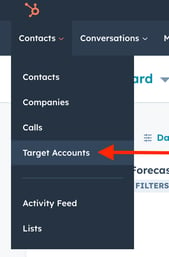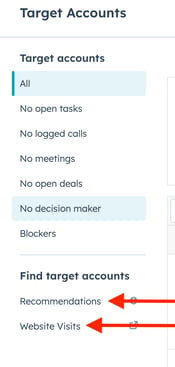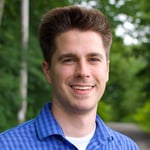HubSpot Power-Up: Account-Based Marketing for Manufacturers
Written by
You have a lot of unknown prospects that are probably a good fit for your complex B2B company and its products or services. But there are also the ones that are a great fit.
The potential rewards of landing a “great fit” account are worth the extra effort of engaging them on a deeper level than typical marketing tactics. Leveraging account-based marketing (ABM) is one of the best ways to do that.
ABM is a strategy that identifies and influences specific companies that are the best possible fit for your product or service and targets them with content that speaks directly to them, as it complements your existing inbound marketing strategy.
We previously covered ABM in these two blog articles that are worth a look:
- 6 Keys to a Successful Account-Based Marketing (ABM) Plan
- 9 Simple Ways to Identify & Prioritize Your ABM Targets
Today, we’re going to talk specifically about HubSpot, and how manufacturers can use account-based marketing. HubSpot users already have powerful ABM tools at their fingertips if they have Marketing or Sales Pro — and some additional features if using HubSpot Enterprise.
We’ll share step-by-step tips for combining your sales and marketing efforts to identify, track, manage, and ultimately close deals for these target companies and contacts.
RELATED: Discover All the Reasons to Go With HubSpot
Identify Your Target Focus
Any worthy marketing effort requires focus. For ABM, your targets may be accounts, industries, job titles, or a mix of these. It all depends on what makes sense for your business.
You’ve likely already identified your buyer personas — the fictional representations of your ideal customers. ABM builds on your strategy and goes a step further to target specific, real-life companies and contacts who are an ideal fit.
But how do you identify them in HubSpot? When you include initial companies on your Target Accounts lists within the platform, HubSpot provides recommendations of others based on the attributes you’ve already identified. In your HubSpot portal, look under “Contacts” and click the “Target Accounts” tab.

Next, select either “Recommendations” or “Website Visits” to see what companies are visiting your website as well as the companies that HubSpot recommends you target.

Click a company name and review the data that HubSpot provides. Then, choose to add each as a target account or add it to “favorites.”
This video from Rick Kranz, now Weidert Group’s Director of Revenue Operations (formerly with OverGo Studio), walks you through the Target Account tool in more detail.
Different Approaches to Targeting
Again, depending on your organization, you’ll need to determine the best way for you to target. Keep in mind that you can combine your account-based targeting with industry, job title, and other targeting that makes sense for your business. Here’s a brief overview:
- Accounts — the most traditional method, you select companies by the account itself; you’re confident to pick target accounts based on your experience and knowledge
- Industries — choose an industry that your company has either had past success with or may be a future opportunity based on your product/service offering
- Job titles — individuals may have job titles that perfectly align with your strengths and could be ideal positions to target in LinkedIn ads, for example.
You can include as many or few prospects as you’d like. Just establish some parameters for identifying the high-touch, high-value manufacturers that will be your targets.
If you’re a complex B2B organization, your prospects likely have longer sales processes, are more relationship-based, and may even have several people involved in buying decisions. To narrow it down, start by asking qualifying questions:
- What traits define our ideal customer profile (ICP), and where can we find more of them?
- Which existing HubSpot contacts stand out from other prospects as the most ideal partners?
- Are there open deals that you’d like to move more quickly down the sales funnel?
- Which ideal prospects are familiar with your brand and already engaged through your inbound channels?
- Who among your existing customers might be a candidate for an upsell or cross-sell, such as into a different division of the company or an additional piece of equipment?
ABM + Inbound
Account-based marketing (ABM) lets you precisely measure ROI, helping select the best targets for your business, effectively nurture valued accounts, and identify similar prospects. Successful ROI from ABM tactics informs and advances your inbound strategy.
Speaking of strategy, combining your existing inbound marketing strategy with account-based marketing tactics helps demonstrate that your company not only wants to build its sales pipeline, but that it wants to build relationships.
One of the most important relationships that needs to be built first is inside your own organization. Aligning your sales and marketing teams so that they work together to reach your mutual goals is the key to ABM success.
One channel that expands your marketing arsenal is paid media. Adding this “push” method, also called pay-per-click (PPC) ads, has its place within inbound strategy. This guide to paid media is loaded with everything you need to know. Click below to explore right now!
Subscribe To Our Blog
Information. Insights. Ideas. Get notified every time a new Weidert Group blog article is published – subscribe now!
You May Also Like...

Search Engine Optimization
Optimize Your Industrial Website for AI Search

Marketing Technology
Why Unified Data Efforts Fail (and How Manufacturers Can Fix It)

Search Engine Optimization
How Falcon Rebuilt Industrial AI Search Visibility in 2025
Accelerate Your Growth with
Weidert Group
If you’re ready to explore a partnership, request a personalized consultation with our team.

